A Letter to The Editor: re: “The Producers of Right Now.” Four in Eight Wines. (8-Bottle Pack $228)
When our friend and colleague Leslie Pariseau from ‘PUNCH’ Drinks sent out an email to wine retailers and restaurant/bar managers asking about the state of the art in wine appreciation today, we thought it was worthy of a detailed response. In brief, she asked four pertinent questions:
• Which producers do you feel represent the best of wine culture right now?
• What can each of these producers teach us about zeitgeist values right now (and by right now, we mean right now)?
• What do you feel they say about the evolution of your own tastes?
• What do you think goes into the attraction toward these producers, both among wine people and consumers in your market (e.g. label design, story, labor practices, agriculture, etc.)?
These are the very questions we ponder with every bottle we shelve and every package we assemble for our weekly wine offerings. They represent our ongoing fascination with winemaking trends vs. winemaking traditions, and they spearhead our search for labels (many obscure) that represent a growing movement in every wine region we cover—a move toward minimal interventionalism.
In all things wine, ‘balance’ is the key to the kingdom; it is a term interchangeable with harmony and may reference acid, alcohol level, grape sugars and tannin, but also, a scale in which the long-term health of the product is considered along with the flavors inherent on release. More than just a radar blip or a grab for social capital, a naturalistic focus in winemaking is not only more honest approach to the art of fermentation, but it is better for a sustainable environment: It’s a nod to the past and a gesture toward the future.
These are four of our wines whose owners and winemakers check all the boxes. Each of these selections expresses the evolution of style through innovation while honoring heritage through tradition. Not only that, but each puts an emphasis on Ms. Pariseau sense of immediacy: They are wines that will not require years to mature but are quite ready to drink… right now.
Château de Fosse-Sèche
(Saumur)
Like an iron-red ruby amid the seafoam of limestone, the soils of Fosse-Sèche are rather unique to the Loire—a fact that has been recognized since the 13th century, when Benedictine monks first planted vines there. Move the clocks ahead to 1998, when the Keller-Pire family took over the estate, enraptured by the beauty of the surroundings and its exceptional terroir, composed of iron oxide and flint silex just beneath the topsoil. Twin brothers Guillaume and Adrien Pire, who grew up in Madagascar, brought with them not only degrees in agronomy and viticulture, but a deep respect for the wild land of their youth. Along with their wives Julie and Cécile, they have instilled Fosse-Sèche’s 800-year history with an abiding belief in a holistic remake of all phases of winemaking.
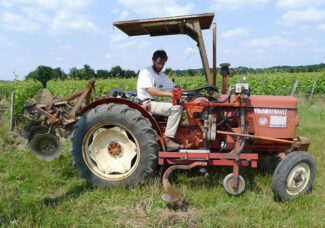
Adrien Pire-Keller
If a single word was to describe the most profound change that has taken modern European winemaking by storm, it is biodynamics—techniques that their forebears may have practiced by necessity without naming it, but which today is a nod to the cosmic continuum of which agriculture is only a part. Two-thirds of the Fosse-Sèche property is a natural reserve, with a bird sanctuary, acres of honey flowers, goats, bees and thriving wetlands; the hundred acres of vine are in a single parcel and are planted to Cabernet Franc (70%) and Chenin Blanc (30%).
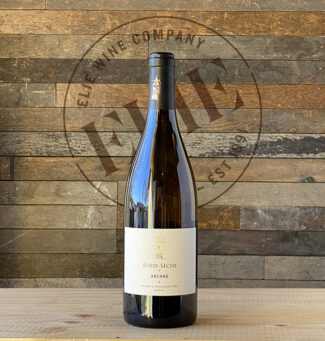 Château de Fosse-Sèche ‘Arcane’, VdF* Loire Blanc 2019 (Natural) ($39)
Château de Fosse-Sèche ‘Arcane’, VdF* Loire Blanc 2019 (Natural) ($39)
A cuvée from the estate’s finest hand-sorted Chenin Blanc, aged on the lees for nine months in French oak, producing a richly-complex and honeyed wine juicy with quince, lime peel, apple and fresh almond, finishing with chalky crispness.
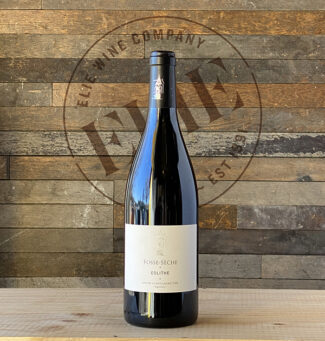 Château de Fosse-Sèche ‘Eolithe’, VdF* Loire Rouge 2018 (Natural) ($34)
Château de Fosse-Sèche ‘Eolithe’, VdF* Loire Rouge 2018 (Natural) ($34)
‘Eolithe’ is the geological name for the iron-sprinkled flint that forms the winery’s unique soil structure. Relatively low in alcohol for a fully ripened Cabernet Franc (12.5%), the wine is rich with purple flowers (violets) and purple fruits, plums and blackberries; a piercing spine of acidity keeps the flavors lively and promises potential for tomorrow and tomorrow and tomorrow—if you don’t drink it tonight.
*VdF: Established a decade ago, Vin de France is a special designation meant to allow vintners to blend wines from different regions and new combinations of grape varieties, and represented a fundamental shift for a country tied to geographic classification for its wines. It has been a resounding success, with more than 340 million bottles sold annually under the VdF label, much of it increasingly high-quality and medal-worthy.
Domaine de la Charmoise, Henry Marionnet
(Touraine)
If the prevailing spirit among modern winemakers acknowledges a spiritual connection between humans and earth, it is no wonder that Henry Marionnet is known as ‘The Pope of Gamay.’ The vines of Domaine de la Charmoise—150 acres mostly dedicated to Sauvignon Blanc and Gamay—grow at the highest point between the Loire and Cher rivers, where a combination of aspect and geology provides plenty of sunshine and shelter against spring frost. In that environment, which his family has owned since 1850, Henry Marionnet says: “Give me the most beautiful grapes in the world and I will make you the greatest wine in the world.”
As would suit a purist’s purist, his mentor was the earth itself: “I never attended viticultural school; my winemaking education involved working with the horses ploughing and clearing, and with a pickaxe, working the ground between the vines by hand. When I took over Domaine de la Charmoise in 1967, I began to change things. Some of the vines I inherited were of questionable merit, hybrids or similar sub-standard stock, so I set about replanting and expanding the vineyards.”

Father and Son: Henry and Jean-Sébastien Marionnet
Having recently succeeded his father in managing the estate, Henry’s son Jean-Sébastien has brought his own perspective to Domaine de la Charmoise, expanding the range to include Côt (Malbec) and Chenin Blanc as well as some Loire’s rarest varietals. To be sure, Henry’s presence is still widely felt—as an advisor and a lodestar.
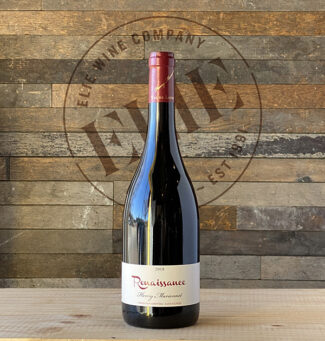 Henry Marionnet ‘Renaissance’, Touraine 2018 (Natural) ($36)
Henry Marionnet ‘Renaissance’, Touraine 2018 (Natural) ($36)
“Here we only make special wines,” says Henry Marionnet. “Wines that others don’t make.”
The swagger touted by ‘Renaissance’ centers on a plot of ungrafted Gamay planted in 1992; Marionnet claims that it is the only such vineyard in Europe. The soil is stony, flinty clay combined with silica which warm up quickly and is known locally as ‘perruches’—a word that translates directly as ‘parakeets.’ Carbonic maceration may occasionally turn Gamay into bubblegum, but here, from the Loire’s legendary 2018 vintage (vinified on natural yeast and bottled without sulfites) it is bright and beautiful, suave and supple, exhibiting a refined nose and a juicy palate with notes of violet, peony and fresh red-fruit syrup.
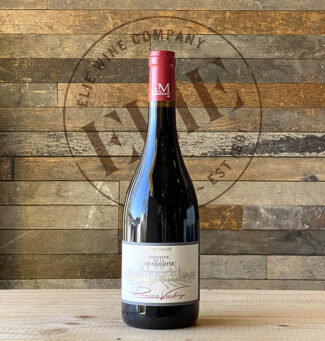 Domaine de la Charmoise ‘Première Vendange’, Touraine 2019 (Natural) ($23)
Domaine de la Charmoise ‘Première Vendange’, Touraine 2019 (Natural) ($23)
The Gamay that produces ‘Première Vendange’ is (as both Marionnet and the barons of Beaujolais would like to make clear) traditional Gamay Noir à Jus Blanc as opposed to the red-fleshed varieties often used to add color to other wines. The vines that make up the cuvée were planted in 1967 and 1978 on a combination of flinty stones in a mix of sand, gravel and clay. The fruit is picked by hand and whole-bunch fermented in stainless steel vats via carbonic maceration, a process continued by indigenous yeasts. The result is velvet smooth with lithe, ripe fruit beneath a floral canopy that shows hibiscus and violet and a touch of anise.
Bodegas y Viñedos Artuke
(Rioja)
The French have long celebrated micro-terroirs, recognizing in their system of ‘lieu-dit’ and ‘climat’ that certain parcels of land produce wines identifiably unique from those nearby, even if they share an appellation. Vines are influenced by soil, aspect, rainfall, air drainage, and even the subtlest differences can make a tangible difference in the resulting wine.
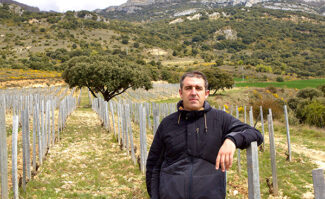
Arturo de Miguel
Brothers Arturo and Kike de Miguel have re-imagined the concept in Rioja Alavesa. Artuke (a portmanteau of their two names) consists of 32 different vineyard plots on 54 acres that fall within a geographic triangle formed by the villages of Baños de Ebros, Abalos and San Vicente—all north of the Ebro River and each with unique terroir. Traditionally, Spain’s Gran Reservas have been sourced from a multitude of vineyards, and the art was seen in the expertise of the blend and the changes wrought by long aging prior to release. The brothers have chosen to reject the constraints of Rioja’s classification system (which is based primarily on time and type of aging) to focus instead on vinifying small cuvées of indigenous varieties, and aging them for a shorter time in neutral barrels in order to capture the purest, most vivid expressions possible.
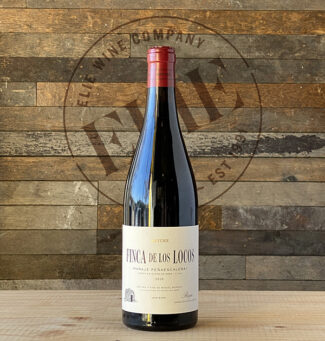 Artuke ‘Finca de Los Locos’, Rioja 2018 ($35)
Artuke ‘Finca de Los Locos’, Rioja 2018 ($35)
Finca de Los Locos is a terraced site that overlooks the Ebro River and Paso Las Mañas. At more than 2000 feet elevation, the wind-swept, pebble-strewn slope is the highest in Samaniego. 80% Tempranillo and 20% Graciano from vines planted in 1981; the name comes from the assignation neighbors gave Arturo and Kike’s grandfather when he first planted vines in the shallow chalky soil: ‘Loco’—crazy. Loco boy makes good with this sapid, solidly Mediterranean-flavors of fresh herb, dry earth, dusty tannins and crisp, almost salty minerality. 10,800 bottles made.
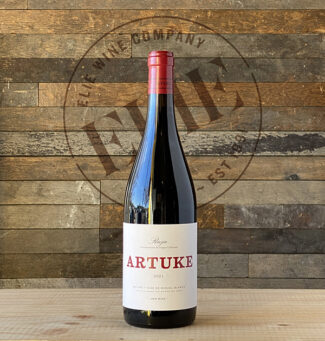 Artuke ‘Artuke’, Rioja 2021 ($17)
Artuke ‘Artuke’, Rioja 2021 ($17)
Far from the grapey Kool-Ade that often sums up Beaujolais Nouveau, this carbonic offering is 95% Tempranillo and 5% Viura (a white grape a.k.a. Macabeo; one of the Cava trinity). It is beautiful, fragrant and luscious with a nose of violets and thyme, a rich mid-palate of black cherry and cranberry underscored by orange peel and Damson plum.
Uva de Vida
(Castilla – La Mancha)
“If we take care of the earth, we take care of ourselves,” promises Carmen López Delgado. “Life has given me a new opportunity.”
She is alluding to the sudden illness and prolonged recovery that refocused her cosmic viewpoint and convinced her that her personal renewal could be mirrored in the ways she tended a vineyard. “We made this decision when my illness pushed us to look for everything related to living and life in seeking to recover health.”

Carmen López Delgado
In 2005, with her partner Luis Ruiz, she pioneered biodynamic agriculture and winemaking throughout a 20-acre vineyard in Santa Olalla near Toledo. The dry continental climate of central Spain was ideal for the cultivation of Graciano, of which she planted twelve acres compared to five of Tempranillo. That alone makes her iconic; Graciano is rare enough in Spain, let alone among the cereal fields and Cornicabra olive groves of Castilla-La Mancha.
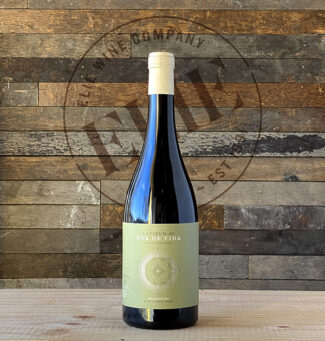 Uva de Vida ‘Latitud 40’, La Tierra de Castilla 2018 (Natural) ($24)
Uva de Vida ‘Latitud 40’, La Tierra de Castilla 2018 (Natural) ($24)
Uva de Vida winery sits at the wine-friendly 40˚ northern latitude, which circumvents the globe to include northern California, Sardinia and about half of the wine producing areas in China. Here, forty miles south of Madrid, it suits Graciano—the sole varietal used here. Although the ‘Vino de la Tierra de Castilla’ designation carries with it slightly less stringent regulations that of the prestigious DO of Castilla-La Mancha, like the ‘Super Tuscans’, gems may be found among the iconoclasts. Ideally served slightly chilled, ‘Latitud 40’ displays freshness on the nose with hints of lilac, menthol and pie cherries. On the palate, wild blueberries take center stage and the menthol shows a mint-leaf edge. The finish is long and juicy with a slight hint of chocolate. 20,000 bottles made.
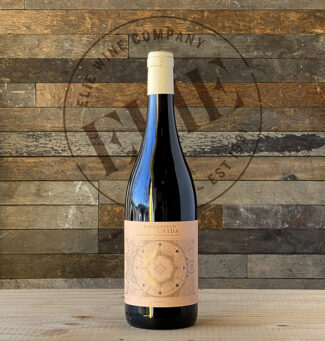 Uva de Vida ‘Biográfico’, La Tierra de Castilla 2020 (Natural) ($20)
Uva de Vida ‘Biográfico’, La Tierra de Castilla 2020 (Natural) ($20)
The 2018 version of this vibrant wine contains a 50/50 blend of Tempranillo and Graciano grown in clay-limestone soils at an altitude of about 1600 feet. Hand-harvested and fermented on ambient yeasts, the wine is clarified naturally and bottled unfiltered without Sulphur. The dark color belies a lyrical, almost floral quality to the wine; lilac and violet notes appear on the nose, with bright, spicy red fruit supplied by the Graciano tempered with the earthy tannins of Tempranillo. 8,800 bottles produced.
- - -
Posted on 2022.04.28 in Saumur-Champigny, Touraine, La Tierra de Castilla, France, Spain DO, Wine-Aid Packages, Rioja DOC
Featured Wines
- Notebook: A’Boudt Town
- Saturday Sips Wines
- Saturday Sips Review Club
- The Champagne Society
- Wine-Aid Packages
Wine Regions
Grape Varieties
Aglianico, Albarino, Albarín Blanco, Albarín Tinto, Albillo, Aleatico, Arbanne, Aubun, Barbarossa, barbera, Beaune, Biancu Gentile, bourboulenc, Cabernet Franc, Cabernet Sauvignon, Caino, Caladoc, Calvi, Carcajolu-Neru, Carignan, Chablis, Chardonnay, Chasselas, Clairette, Corvina, Cot, Counoise, Erbamat, Ferrol, Fiano, Frappato, Friulano, Fromenteau, Fumin, Garnacha, Gewurztraminer, Godello, Graciano, Grenache, Grolleau, Groppello, Juan Garcia, Lambrusco, Loureira, Macabeo, Macabou, Malvasia, Malvasia Nera, Marsanne, Marselan, Marzemino, Melon de Bourgogne, Merlot, Mondeuse, Montanaccia, Montepulciano, Morescola, Morescono, Moscatell, Muscadelle, Muscat, Natural, Nero d'Avola, Parellada, Patrimonio, Petit Meslier, Petit Verdot, Pineau d'Aunis, Pinot Auxerrois, Pinot Blanc, Pinot Gris, Pinot Meunier, Pinot Noir, Poulsard, Prieto Picudo, Rondinella, Rousanne, Roussanne, Sangiovese, Sauvignon Blanc, Savignin, Semillon, Souson, Sparkling, Sumoll, Sylvaner, Syrah, Tannat, Tempranillo, Trebbiano, Trebbiano Valtenesi, Treixadura, Trousseau, Ugni Blanc, vaccarèse, Verdicchio, Vermentino, Viognier, Viura, Xarel-loWines & Events by Date
- April 2024
- March 2024
- February 2024
- January 2024
- December 2023
- November 2023
- October 2023
- September 2023
- August 2023
- July 2023
- June 2023
- May 2023
- April 2023
- March 2023
- February 2023
- January 2023
- December 2022
- November 2022
- October 2022
- September 2022
- August 2022
- July 2022
- June 2022
- May 2022
- April 2022
- March 2022
- February 2022
- January 2022
- December 2021
- November 2021
- October 2021
- September 2021
- August 2021
- July 2021
- June 2021
- May 2021
- April 2021
- March 2021
- February 2021
- January 2021
- December 2020
- November 2020
- October 2020
- September 2020
- August 2020
- July 2020
- June 2020
- May 2020
- April 2020
- March 2020
- February 2020
- January 2020
- December 2019
- November 2019
- October 2019
- September 2019
- August 2019
- July 2019
- June 2019
- May 2019
- April 2019
- March 2019
- February 2019
- January 2019
- December 2018
- November 2018
- October 2018
- September 2018
- August 2018
- July 2018
- June 2018
- May 2018
- April 2018
- March 2018
- February 2018
- January 2018
- December 2017
- November 2017
- October 2017
- September 2017
- August 2017
- July 2017
- June 2017
- May 2017
- April 2017
- March 2017
- February 2017
- January 2017
- December 2016
- November 2016
- October 2016
- September 2016
- August 2016
- July 2016
- June 2016
- May 2016
- April 2016
- March 2016
- February 2016
- January 2016
- December 2015
- November 2015
- October 2015
- September 2015
- August 2015
- July 2015
- June 2015
- May 2015
- April 2015
- March 2015
- February 2015
- January 2015
- December 2014
- November 2014
- October 2014
- September 2014
- August 2014
- July 2014
- June 2014
- April 2014
- March 2014
- February 2014
- January 2014
- December 2013
- November 2013
- October 2013
- September 2013
- August 2013
- July 2013
- June 2013
- May 2013
- April 2013
- March 2013
- February 2013
- January 2013
- December 2012
- November 2012
- October 2012
- February 2004
Search



